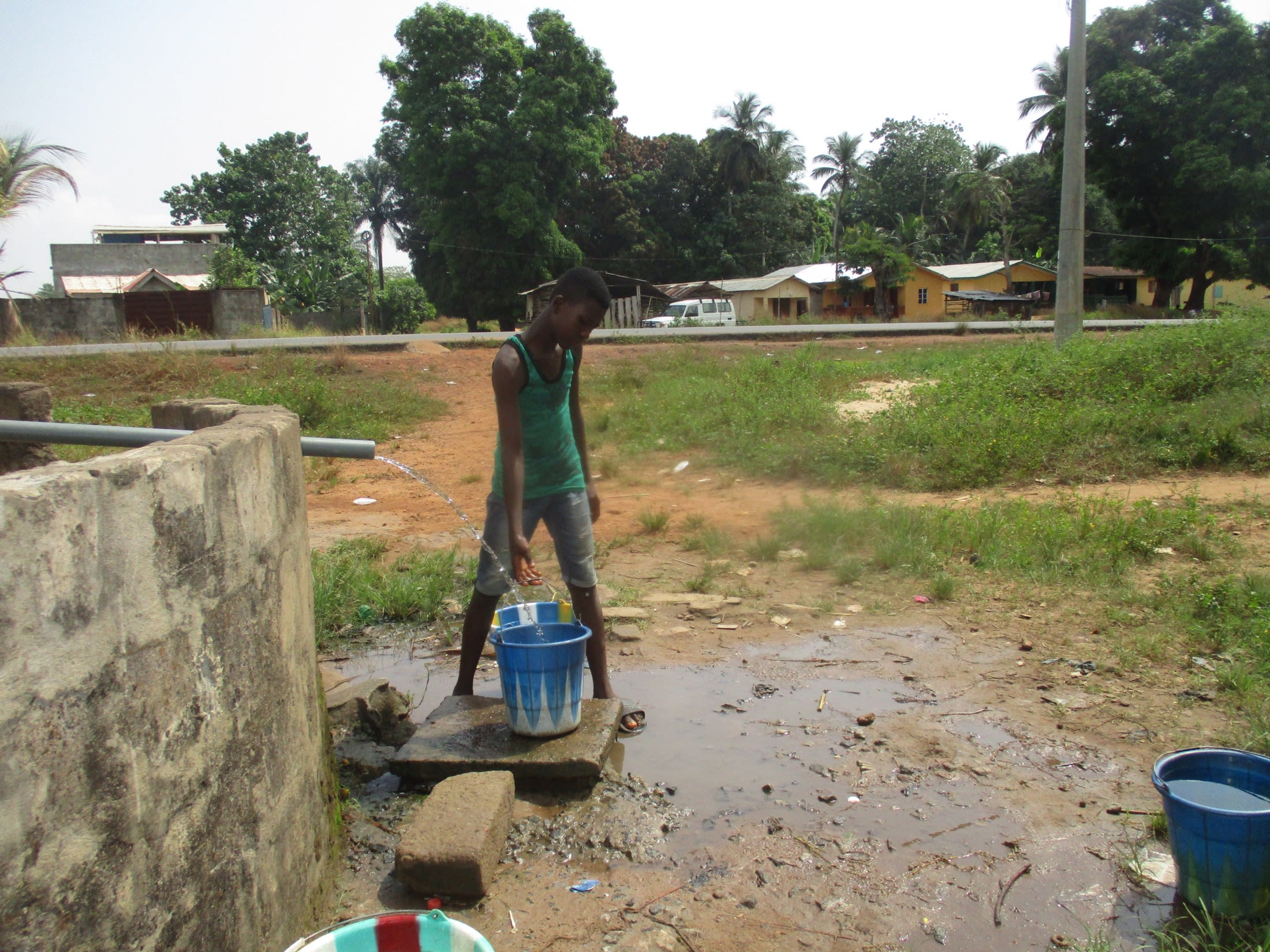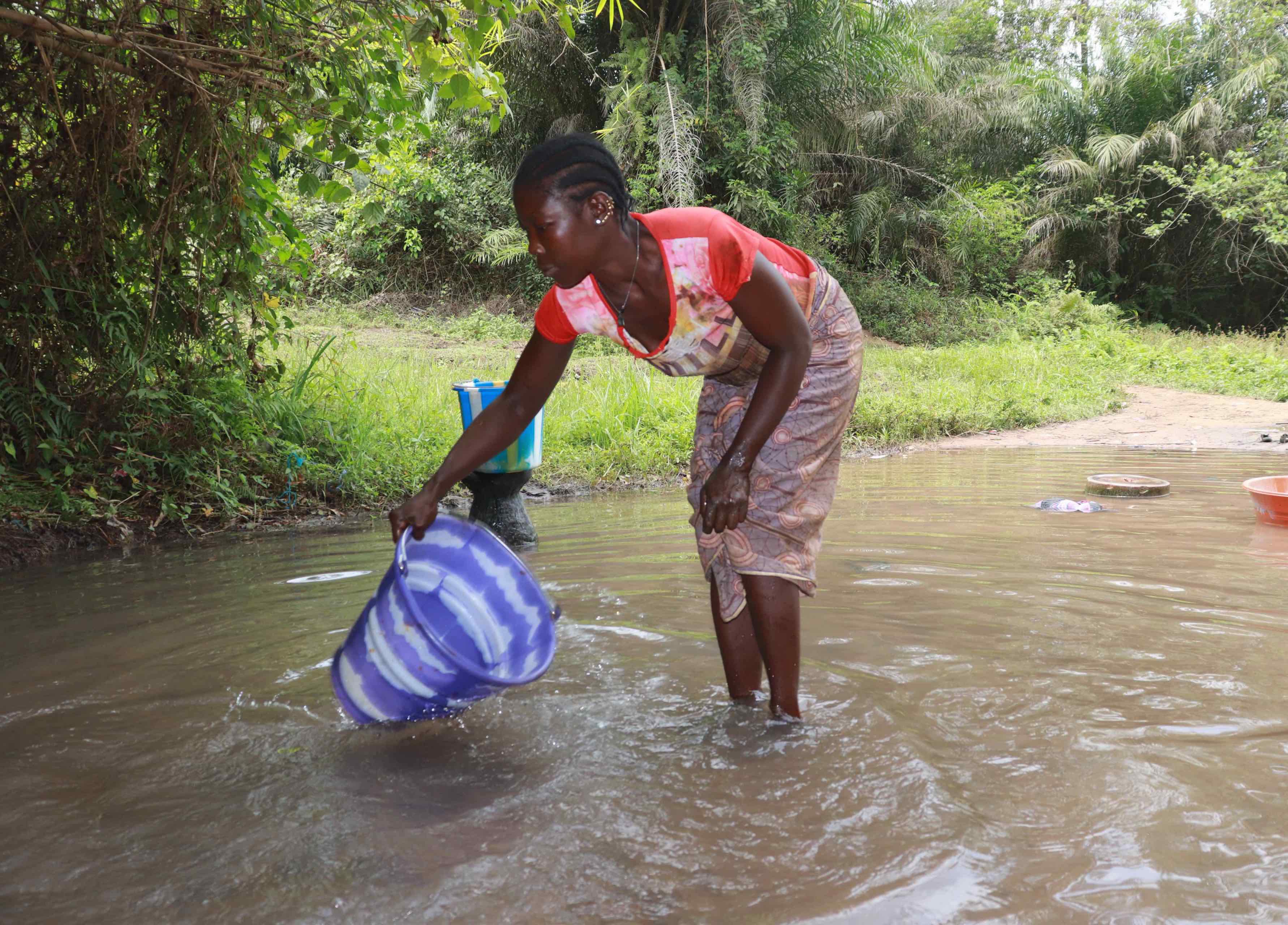The 230 community members in Sumbaya primarily rely on a hand-dug well for their daily water, but the well has significant issues. It was constructed in 1986, but was last rehabilitated nearly thirty years ago and requires serious attention to make it functional enough to serve the community effectively once again.

The well has no proper drainage system and is surrounded by grass, dirt, and pools of stagnant water. The cement walls surrounding the well are crumbling, and the gate is broken, giving animals open access to defecate nearby. The pump head has unscrewed nuts and bolts, and water quality tests are not regularly conducted.
It is in need of many repairs, but it is also too shallow and suffering from seasonal low water levels that worsen each year. These deficiencies and the high water demand from the large population leave people frustrated and tired.
When the water level is low, or people lose patience from waiting in long queues, they resort to the local swamp. But the swamp water smells and has a reddish color. It is full of contaminants from farming runoff and soap residue from bathing and laundry done nearby. Understandably, the water is contaminated and not safe for drinking.

Isata S., 16, said, "The present water constraint is a burden on me because I and my brothers have the responsibility to fetch water at home every day. Since the main well is broken down, it is extremely hard nowadays to get access to pure drinking water."
She continued to share how she has resorted to collecting water from the swamp and its impact on her. "I must walk down [to] the swamp water source to fetch water for domestic activities. The energy required to fetch water from the swamp makes me very tired and causes me to have less time to read my lesson notes at night. It affects my academic performance in class and exams."
The lack of access to clean water for community members leads to many issues in their daily lives. The primary source of income for community members is farming, but without water, production shrinks. Daily household chores and proper hygiene practices have become almost impossible. Meals are delayed, and children go to school with dirty uniforms and without bathing.
We will rehabilitate the well by converting it into a drilled borehole. Community members need access to safe, reliable water to enable them to attend to other critical daily tasks.
Here's what we're going to do about it:
Well Rehabilitation
The well marked for this overhaul is dry for a few months every year and needs major work to supply adequate, clean water to the community year round. The pump will be removed, and a hand auger will be lowered inside and powered by a drill team. This hand auger will allow the team to drill several meters deeper to hit a sufficient water column that will ensure the well supplies water throughout all seasons.
As the team drills, casing will be installed, transforming the bottom of this hand-dug well into a borehole. PVC piping will connect this lower system directly to the pump, a construction that we know will also improve the quality of water.
Once this plan is implemented, everyone within the community will have access to safe drinking water in both quality and quantity, even through the dry months.
Hygiene and Sanitation Training
There will be hygiene and sanitation training sessions offered for three days in a row.
After our visit, the hygiene and sanitation trainer decided it would be best to teach community members how to build a tippy tap (a hand-washing station built with a jerrycan, string, and sticks). They will use these tippy taps for handwashing demonstrations, and will also teach about other tools like dish racks and the importance of properly penning in animals.
These trainings will also strengthen the water user committee that manages and maintains this well. They enforce proper behavior and report to us whenever they need our help solving a serious problem, like a pump breakdown.

 Borehole Well and Hand Pump
Borehole Well and Hand Pump

































